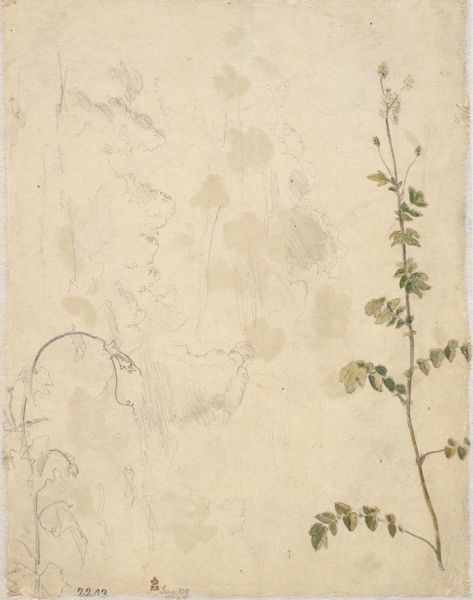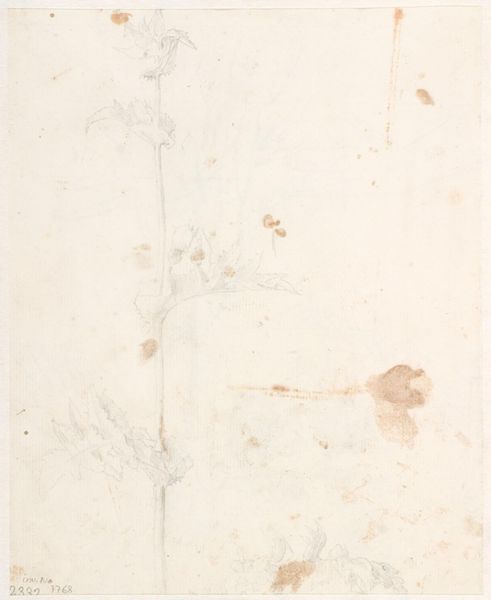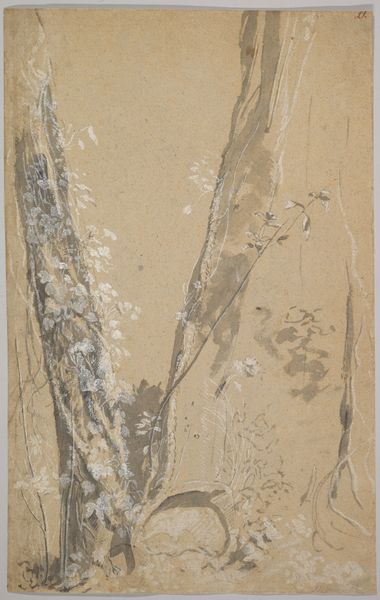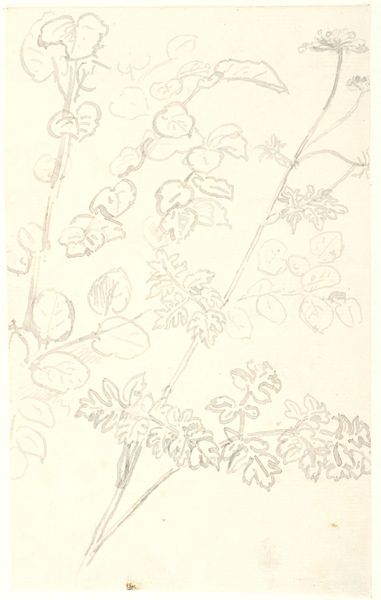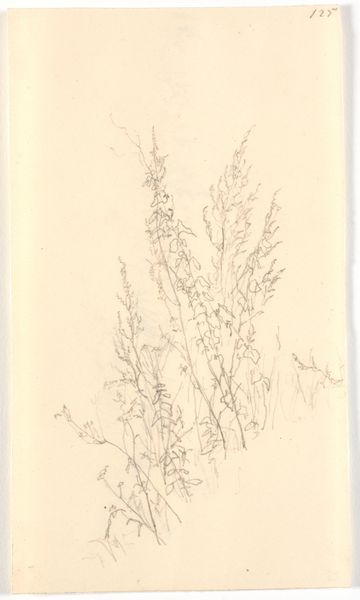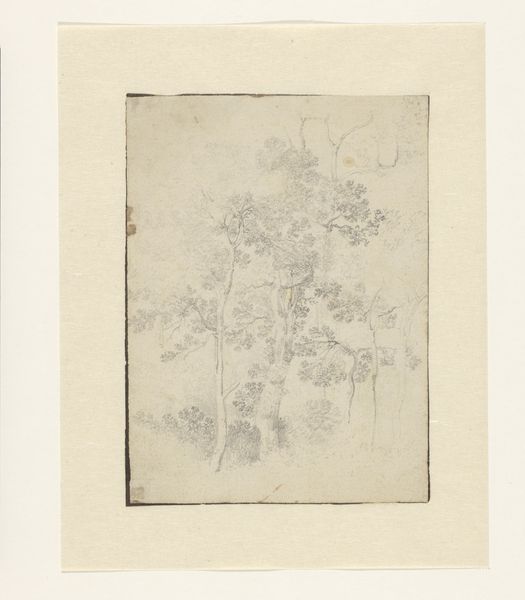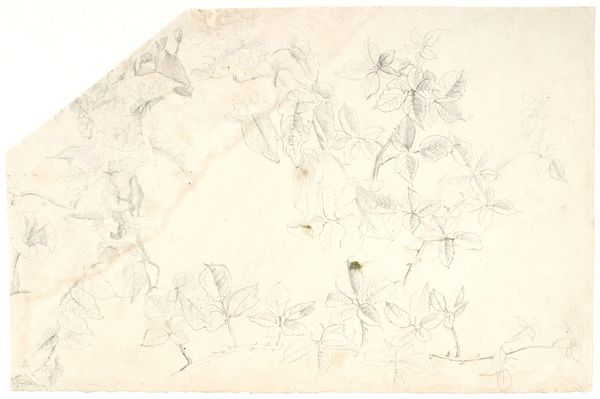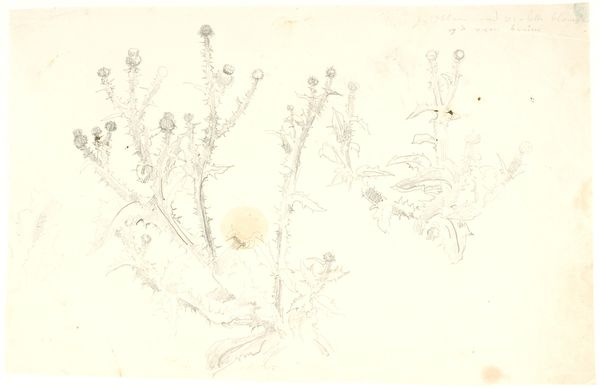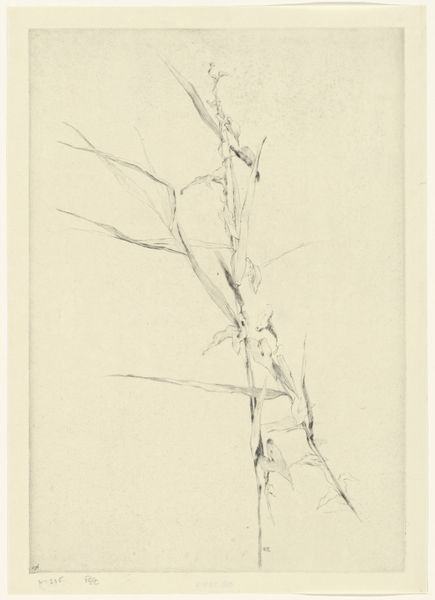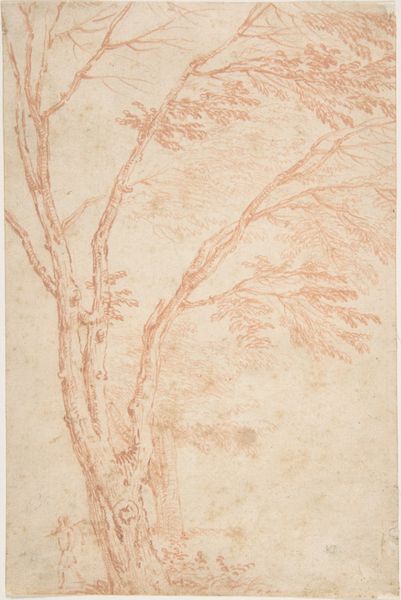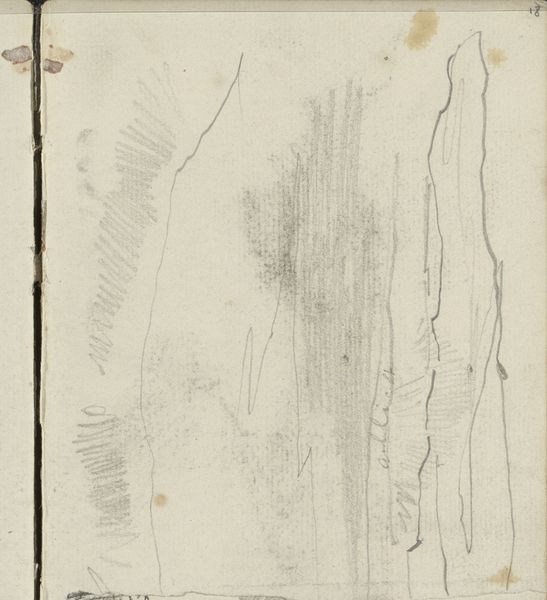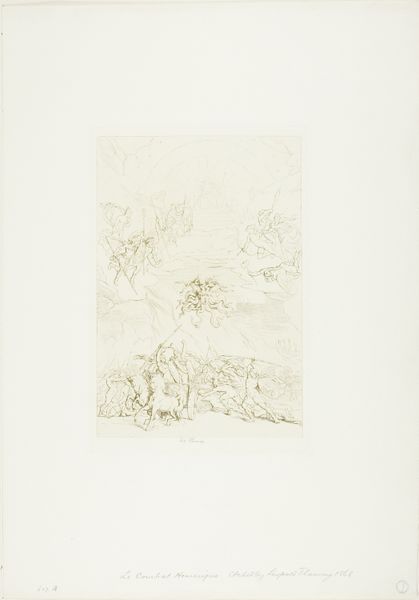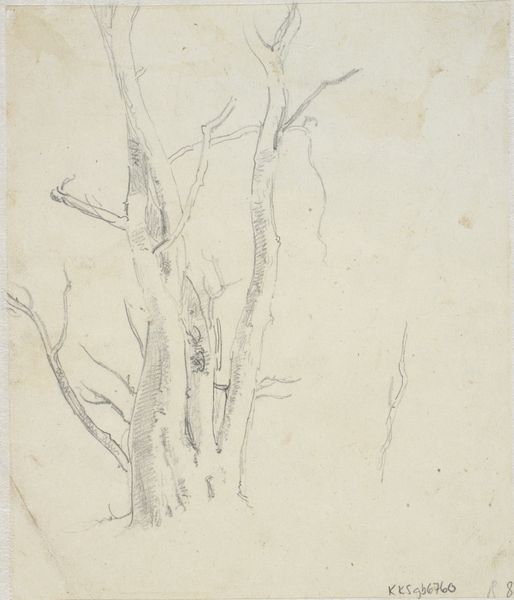
drawing, paper, pencil
#
drawing
#
landscape
#
paper
#
romanticism
#
pencil
Dimensions: 203 mm (height) x 161 mm (width) (bladmaal)
Curator: So delicate and subtle, it’s hard to believe these studies of plant life come from the mid-19th century. Dankvart Dreyer created these pencil drawings on paper between 1831 and 1852. The museum refers to them collectively as "Plantestudier." Editor: I see quiet observation; there is such stillness, almost fragility, about the light touch of the pencil on the paper. Curator: What’s fascinating to me is how Dreyer seems to merge scientific observation with artistic expression. You see the care in depicting each leaf, each stem, yet the composition has an airy, almost unfinished quality. Think about the materiality too. Paper and pencil – simple tools, widely accessible – elevated to capture the nuances of the natural world. What does this say about democratizing art-making and the study of nature at that time? Editor: Absolutely, and look closer at the context in the 19th century – botany and natural sciences were becoming more popularized, connected with notions of national identity. I am struck by how it speaks to Romanticism's engagement with nature, situating humanity within these grand, interconnected natural systems, and then contemplating our fragile and temporal roles. And you are so right, paper and pencil were democratized forms of mark-making; could he access fancier paints or charcoals or did the medium also shape his botanical practice? Curator: That’s an excellent point, his choice of medium could have had direct bearing on his ability to execute, particularly if one thinks about a Romantic impulse to head outdoors and quickly capture those details. Editor: I think it reminds us that the artwork is an intersection of social and material constraints; from access to means to making, to understanding nature at this specific historical juncture. Curator: It prompts us to think critically about our place in nature, and I really enjoy the invitation for us to explore that intersection between artistic expression and botanical documentation. Editor: And for me, it emphasizes the ongoing interplay between art and science. We learn more and look deeper at historical art practice.
Comments
No comments
Be the first to comment and join the conversation on the ultimate creative platform.
